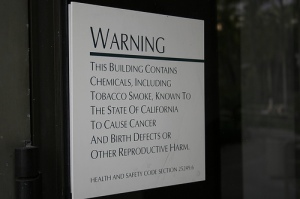 “…In hotel rooms that aren’t properly disinfected, some of the germiest areas tend to be the faucet and sink areas, the flusher of the toilet, the underside of the toilet seat and the shower floor…”
“…In hotel rooms that aren’t properly disinfected, some of the germiest areas tend to be the faucet and sink areas, the flusher of the toilet, the underside of the toilet seat and the shower floor…”
“The first thing I do when I stay at a hotel is remove the comforter and store it in the closet.”
When it comes to hotel bedding, allergens are the biggest problem for guests, Tierno said. Evidence of bedbugs is an immediate dealbreaker for Tierno, but we’ll leave them out of the picture here since that problem is closely related to the presence of guests, not germs.
You can probably imagine what might be lurking in the mattress, but here’s a sampling for those who hesitated: skin cells (when humans sleep they shed about 1.5 million cells or cell clusters an hour), human hair, bodily secretions, fungi, bacteria, dust, dust mites, lint, insect parts, pollen, cosmetics … and more.
Some of the newer hotels use the type of impervious, waterproof covers Tierno carries with him, but most don’t, he said. While the covers were developed for allergy sufferers, Tierno encourages everyone to use them at home and on the road. Ask when you reserve if the hotel uses allergy barriers on beds.
And definitely ditch the bedspread, Tierno advises.
Hotel bedspreads became a hot topic when one featuring bodily fluids from several sources was introduced in boxer Mike Tyson’s 1992 rape trial. The American Hotel & Lodging Association got so many queries at the time that it came out with a statement saying the Centers for Disease Control and Prevention “has NEVER identified, seen, or classified ANY significant disease outbreak in hotel or motel rooms as a result of hotel bedspreads and blankets.”
While many hotels have followed in the footsteps of Westin Hotels and Resorts, adopting a duvet model of bedding mimicking the brand’s Heavenly Bed, plenty of chains on the lower end still use quilted bedspreads.
For more:Â http://www.cnn.com/2011/TRAVEL/02/25/hotel.hygiene/#
 “…employees of the hotel were putting chlorine in the pool without the pump on. When the pump was turned back on, chlorine came out too fast instead of gradually…”
“…employees of the hotel were putting chlorine in the pool without the pump on. When the pump was turned back on, chlorine came out too fast instead of gradually…”




